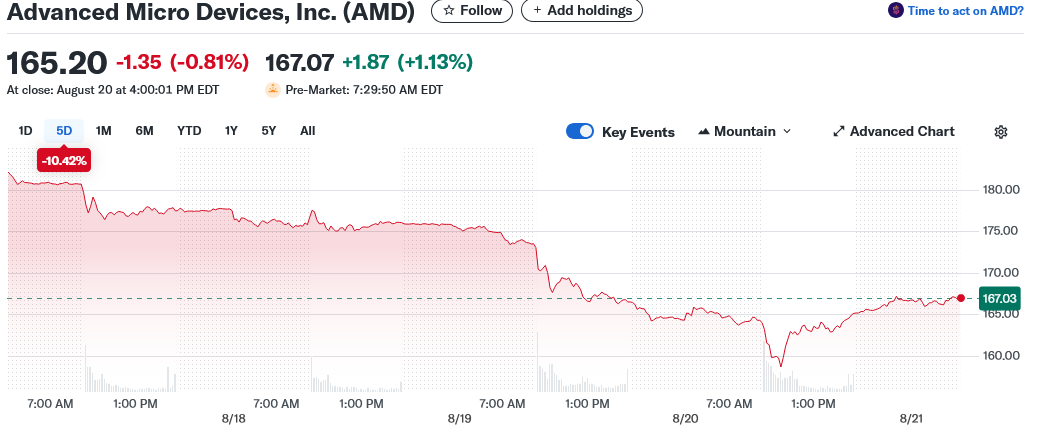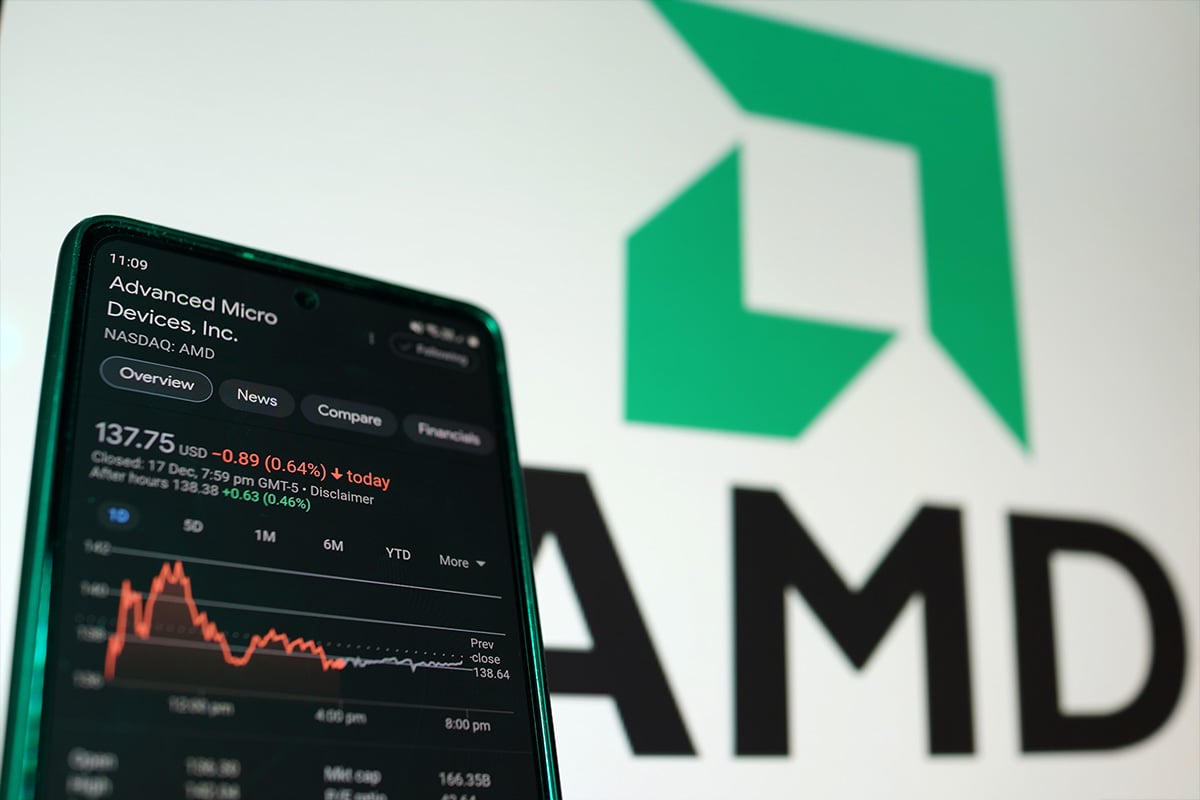TLDR
- AMD stock dropped over 6% after disappointing Q2 earnings, particularly weak performance in AI-driven data center division
- MIT research showing 95% of businesses haven’t profited from generative AI investments is weighing on tech stocks
- Competition intensifies as Nvidia accelerates chip development, Intel secures $2B investment, and Arm Holdings moves to in-house production
- Geopolitical risks from China tensions threaten 24% of AMD’s total revenue
- Stock broke below 20-day moving average for first time since April, ending three-month rally that gained over 40%
AMD’s impressive three-month rally has hit the brakes. The chip maker’s stock tumbled more than 6% after its latest quarterly earnings disappointed investors.
The company’s AI-driven data center division underperformed expectations. This raised questions about whether the artificial intelligence boom is cooling for AMD’s slice of the market.
Revenue barely edged above estimates. But that wasn’t enough to satisfy investors who had bid the stock up 42% over the past three months.
Initially, the selloff looked overdone. AMD opened the next day with a big gap higher, briefly touching $186.65.
That momentum didn’t last. By the end of last week, the stock reversed course and headed lower again.
The decline deepened this Tuesday. Shares tested the $160 level and fell below the 20-day simple moving average for the first time since April.

Competition Heats Up
The semiconductor sector is getting more crowded and aggressive. Nvidia has ramped up chip development to protect its position in the Chinese market while advancing its Rubin processor line.
Arm Holdings shifted toward in-house chipmaking. This move aims to strengthen its position in global supply chains.
Intel attracted a $2 billion investment. The U.S. government could soon take a 10% equity stake in the company.
This underscores Washington’s push to secure domestic chip production. AMD now faces tougher competition on multiple fronts.
MIT Study Adds Pressure
New research from MIT dealt another blow to AI stocks yesterday. The study found that 95% of businesses using generative AI haven’t turned a profit on their investments.
This data sparked sell-offs across the tech sector. AMD stock opened down as much as 5% before recovering some ground.
The research questions whether the AI boom can deliver on its promises. Investors are wondering if a valuation bubble might be ready to pop.
Inflation Concerns Mount
Inflation worries are also weighing on AMD shares. The July Producer Price Index came in much hotter than economists expected.
Target and Home Depot highlighted how tariffs are driving up costs for consumers. Higher inflation could prevent the Federal Reserve from cutting interest rates as much as investors hope.
Rate cuts have been central to AMD’s rally this year. Without them, the stock could lose a key source of support.
Goldman Sachs analyst James Schneider sees strength in AMD’s fundamentals. He noted the company’s leading position in data center GPUs.
But Schneider warned that sky-high investor expectations and scaling constraints could limit near-term gains. He projects AMD’s data center GPU revenue might reach $10-11 billion by 2026.
Execution risks remain large, according to Schneider.
China Risk Looms Large
Geopolitical tensions add another layer of uncertainty. China accounts for roughly 24% of AMD’s total revenue.
Rising trade tensions between Washington and Beijing pose threats. U.S. restrictions on advanced chip exports create additional challenges.
Supply chain changes designed to reduce China dependence may increase costs. These shifts could also slow growth in the medium term.
The stock’s ability to regain momentum depends on several factors. AMD needs to show consistent growth in its AI data center unit.
The company must also navigate global risks that increasingly shape the semiconductor industry. With investor sentiment shaken and rivals making strategic moves, AMD faces a tougher road ahead.
AMD stock was down 2.2% as of 2:20 p.m. ET Tuesday, with shares testing the $160 level after falling below the 20-day moving average for the first time since April.



